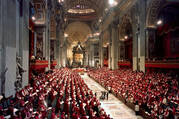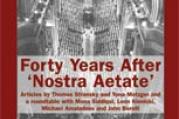Click here if you don’t see subscription options

Restorative Justice
Reading Of Many Things by George M. Anderson, S.J., in the October 10 issue was an uplifting and enjoyable experience. Not only was the human success story of Jos in overcoming his past problems and bad experiences heartwarming; it also offered a good example of peacemaking/humanistic criminology in action. Here we see restorative justice in living form.
I currently teach two undergraduate sections of Probation and Parole: Theory and Practice and will bring this piece to the attention of my students to demonstrate not only the moral philosophical aspect of this component of American corrections, but also the positive and uplifting attitude of Jos’s parole officer, who, when his client stumbled, did not initiate a revocation procedure but reached out to him saying, I’ll work with you.
Truly, with such stories as this, there is hope for our criminal justice system.
James J. Green









